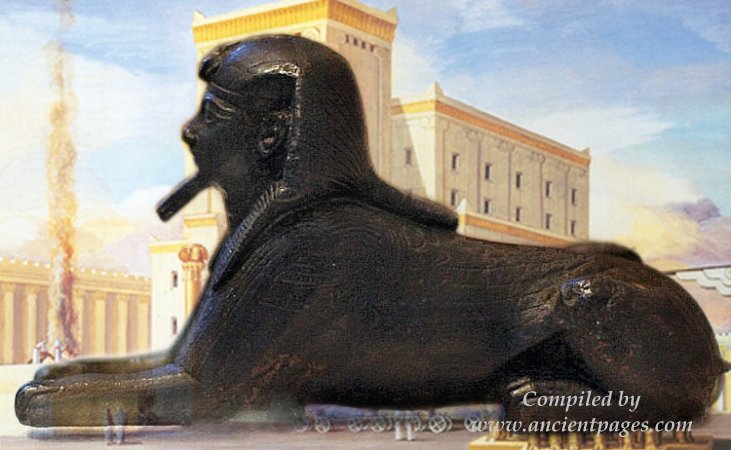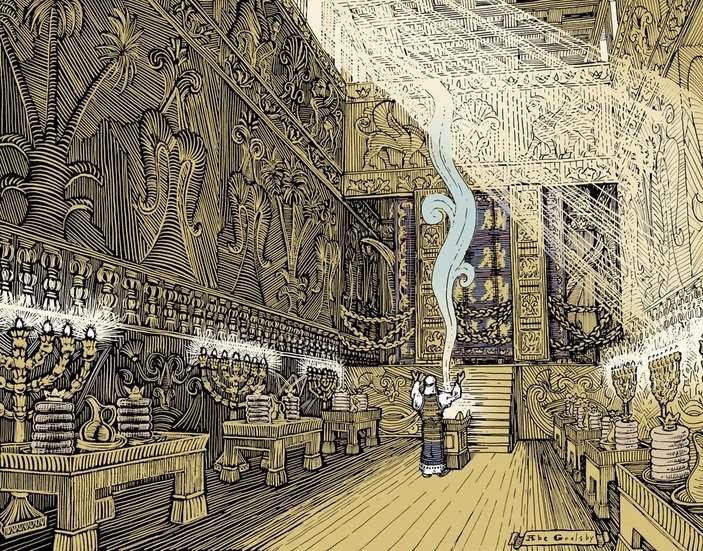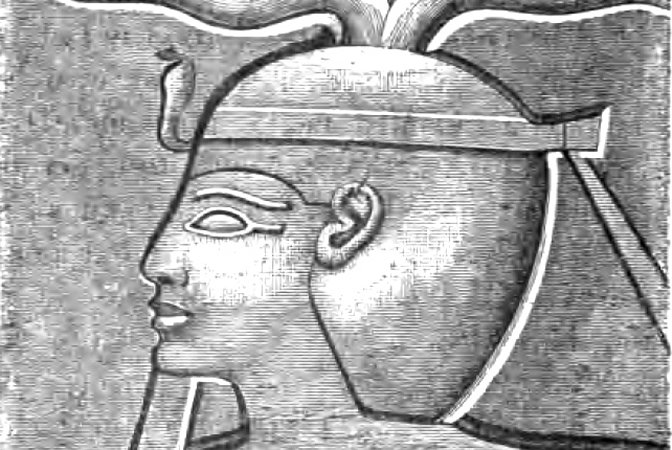Did Pharaoh Shishak Plunder King Solomon’s Temple?
Ellen Lloyd – AncientPages.com – Scholars have confirmed many Biblical events, but there are still accounts in the Holy Book that remain shrouded in mystery. One such case concerns the possible connection between Pharaoh Shishak and King Solomon's Temple.
According to the Bible, Israel was very wealthy during the reign of King Solomon. At the same time, a much weaker and poorer Egypt was still struggling in their Third Intermediate Period (1069–747 B.C.)
After the death of Pharaoh Ramesses XI (reign 1107–1078/77 B.C.), Egypt declined and lost much of its glory. Smendes I, the first King of the 21st Dynasty, ruled from Tanis. Still, he had difficulties maintaining power in Thebes, whose priests were becoming increasingly influential.
Sphinx of King Shishak. In the background artistic impression of King Solomon's Temple.
The Bible tells us that knowledge of King Solomon's wealth spread worldwide. This raises the question of whether ancient Egyptians were interested in Solomon's treasures.
It has been suggested that Pharaoh Shishak plundered King Solomon's Temple, but what evidence supports such claims? While investigating this story, we encounter obstacles and unconfirmed events.
Jeroboam, the first King of Israel, fled to Egypt after King Solomon tried to kill him following prophecies by Yahweh. Jeroboam remained in Egypt, where Shishak ruled until Solomon's death. According to Biblical scholars and Jewish experts, Israel owned thousands of tons of gold and silver. Needless to say, such treasures must have been very appealing to any Egyptian ruler, and Shishak wouldn't have second thoughts about bringing this wealth to his country, but did he have such an opportunity?
After Solomon's death, Jeroboam left Egypt, returned to Israel, and asked the new King Rehoboam to reduce taxes, but his wish was not granted. Jeroboam traveled north and rebuilt and fortified Shechem as the northern kingdom's capital.
Four years later, in support of his ally Jeroboam, Pharaoh Shishak led an army of 60,000 horsemen and 1,200 chariots to invade Judah.
Artistic impression of King Solomon's Temple and its interior. Credit: Public Domain
Pharaoh Shishak sacked Jerusalem and his successful military campaign gave him the perfect opportunity to plunder and boost Egypt's economy. Pharaoh Shishak did unite Egypt, but did he get his hands on Solomon's wealth?
Some scholars speculate that Judah was so weak at the time that it was decided to give King Solomon's riches to Shishak to save the precious Temple.
According to Paul Backholer, author of the book The Ark of the Covenant, Investigating the Ten Leading Claims: Including Pharaoh Shishak's Siege of Solomon's Temple, Ethiopia's Ark & the Garden Tomb, finding historical or archaeological evidence that Pharaoh Shishak plundered King Solomon's Temple, is a complicated issue.
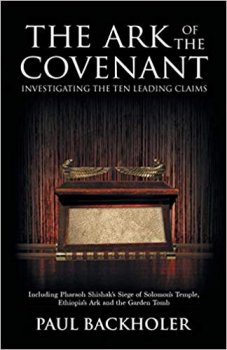 Backholer writes that "grave robbers are sometimes as infamous as the pharaohs, for they managed to search out and empty the royal tombs of their wealth. In fact, the situation was so bad that Egyptian priests eventually gathered and hid away the mummified bodies of their pharaohs in order to protect them.
Backholer writes that "grave robbers are sometimes as infamous as the pharaohs, for they managed to search out and empty the royal tombs of their wealth. In fact, the situation was so bad that Egyptian priests eventually gathered and hid away the mummified bodies of their pharaohs in order to protect them.
Pharaoh Shishak's tomb and the wealth within have never been found. No leads there then. Nevertheless in Tanis riches were uncovered second only to Tutankhamun's; yet the discovery was never made famous for this excavation took place during WWII when the world had bigger problems to think about and the finds were only published in French.
Tanis was the burial ground for the successors of the pharaoh who attacked Jerusalem and just fifty years after his death, Pharaoh Osorkon II came to power.
The Bible declares that Shishak took the wealth of Jerusalem and Egyptians were always working on projects, including burial deposits that needed gold and silver.
Therefore was any of Solomon's treasure melted down and recast to be buried in these royal tombs?
Many of the antiquities of Jerusalem were taken by Shishak and when archaeologists excavated these tombs, they identified golden treasures that the grave robbers had missed. Inside they dug up a bracelet bearing the name of Sheshonq I, the man who took Judah's wealth, and his relatives were buried with gold and silver. Sheshonq II had a golden face mask and a large silver coffin. When Solomon reigned he boasted of the abundance of silver in Jerusalem, but after his death, Egypt plundered the nation, 2 Chronicles 9:10-27."
While visiting an Egyptian museum, Backholer saw virtually unheard of artifacts in the Western world.
Bachelor explains that in the Tanis exhibit, next to Tutankhamun's display, he saw a" bracelet worn by the pharaoh who entered Jerusalem and took the wealth from Israel's first Temple! How many
Did Christians visit this museum without realizing that the man who wore this bracelet saw Solomon's Temple?
The head of Shishak. Image credit: Bible History Online
Two steps away, we found the silver coffin and the golden facemask. These discoveries are almost unknown to the public, and while experts cannot prove that these antiquities were made with Jerusalem's wealth, the link remains provocative.
When we ask what happened to the wealth of Solomon's Temple, the Bible gives us the answer. One of the culprits who stripped the Temple was Shishak, and plunder from his campaign would have been used to build his memorial in the Temple of Karnack, and some of Jerusalem's gold and silver may have been recast, and buried in Tanis."
See also: More Biblical Mysteries
So, yes, Pharaoh Shishak may have plundered King Solomon's Temple, but before making such claims, archaeologists must first offer reliable evidence the structure did exist. This may be very difficult as the Temple may have been completely destroyed.
Updated on January 26, 2023
Written by Ellen Lloyd – AncientPages.com
Copyright © AncientPages.com All rights reserved. This material may not be published, broadcast, rewritten or redistributed in whole or part without the express written permission of AncientPages.com
More From Ancient Pages
-
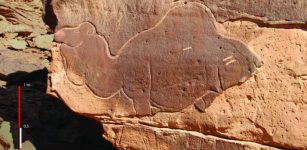 Huge Ancient Animal Sculptures Made By Unknown Carvers At Camel Site In Saudi Arabia Puzzle Archaeologists
Archaeology | Feb 14, 2018
Huge Ancient Animal Sculptures Made By Unknown Carvers At Camel Site In Saudi Arabia Puzzle Archaeologists
Archaeology | Feb 14, 2018 -
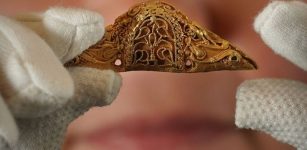 Exceptionally Rare 1,300-Year-Old Golden Pommel Found In Blairdrummond, Scotland
Archaeology | Nov 1, 2022
Exceptionally Rare 1,300-Year-Old Golden Pommel Found In Blairdrummond, Scotland
Archaeology | Nov 1, 2022 -
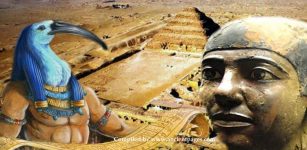 Did Mastermind Imhotep Receive Sacred Knowledge From Followers Of Horus At Heliopolis?
Featured Stories | Feb 7, 2018
Did Mastermind Imhotep Receive Sacred Knowledge From Followers Of Horus At Heliopolis?
Featured Stories | Feb 7, 2018 -
 Fomorians: Supernatural Race Of Giants Who Came From Atlantis
Celtic Mythology | Jul 18, 2017
Fomorians: Supernatural Race Of Giants Who Came From Atlantis
Celtic Mythology | Jul 18, 2017 -
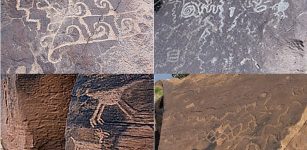 Lyman Lake Petroglyphs And Famous Kokopelli-Flute Player Left By Ancestors Of The Hopi Indians
Civilizations | Nov 26, 2018
Lyman Lake Petroglyphs And Famous Kokopelli-Flute Player Left By Ancestors Of The Hopi Indians
Civilizations | Nov 26, 2018 -
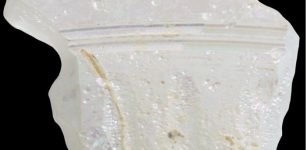 New Method Distinguishes Between Egyptian And Palestinian Glass During Roman Times
Archaeology | Jul 13, 2020
New Method Distinguishes Between Egyptian And Palestinian Glass During Roman Times
Archaeology | Jul 13, 2020 -
 Feud Between The Medici And The Borgia Families – What Caused The Renaissance Clash?
Featured Stories | Mar 5, 2019
Feud Between The Medici And The Borgia Families – What Caused The Renaissance Clash?
Featured Stories | Mar 5, 2019 -
 Why Couldn’t European Sailors Swim In The Past?
Ancient History Facts | Apr 22, 2024
Why Couldn’t European Sailors Swim In The Past?
Ancient History Facts | Apr 22, 2024 -
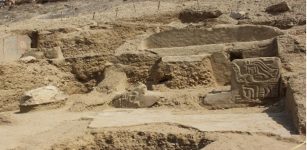 Pre-Inca Temple With Colored Paintings And Carved Sculptures Discovered At The Los Paredones Archaeological Complex, Peru
Archaeology | Jul 8, 2024
Pre-Inca Temple With Colored Paintings And Carved Sculptures Discovered At The Los Paredones Archaeological Complex, Peru
Archaeology | Jul 8, 2024 -
 Perplexing Accounts Of Ancient People Who Demonstrated Incredible Powers Of The Human Mind
Featured Stories | Feb 1, 2019
Perplexing Accounts Of Ancient People Who Demonstrated Incredible Powers Of The Human Mind
Featured Stories | Feb 1, 2019 -
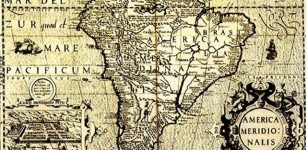 Ancient Enigma Of Mercator’s Amazing Map
Ancient Technology | May 4, 2015
Ancient Enigma Of Mercator’s Amazing Map
Ancient Technology | May 4, 2015 -
 First Discovery Of A 127-Million-Year-Old Side-Necked Turtle Fossil In UK
Fossils | Jun 13, 2023
First Discovery Of A 127-Million-Year-Old Side-Necked Turtle Fossil In UK
Fossils | Jun 13, 2023 -
 Ancient Nomads You’ve Probably Never Heard Of Disappeared From Europe 1,000 Years ago. Now, DNA Analysis Reveals How They Lived
Featured Stories | Jun 20, 2024
Ancient Nomads You’ve Probably Never Heard Of Disappeared From Europe 1,000 Years ago. Now, DNA Analysis Reveals How They Lived
Featured Stories | Jun 20, 2024 -
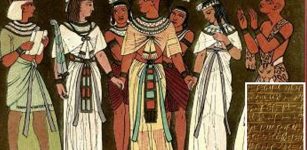 Asenath And The Golden Tablet That Changed Her Destiny
Biblical Mysteries | May 10, 2019
Asenath And The Golden Tablet That Changed Her Destiny
Biblical Mysteries | May 10, 2019 -
 Mystery Of The Horrible ‘Thing’ Found In A Dominican Monastery
Featured Stories | Sep 4, 2023
Mystery Of The Horrible ‘Thing’ Found In A Dominican Monastery
Featured Stories | Sep 4, 2023 -
 Ur-Nammu – Popular And Accomplished Ruler Of Sumer
Civilizations | Oct 31, 2016
Ur-Nammu – Popular And Accomplished Ruler Of Sumer
Civilizations | Oct 31, 2016 -
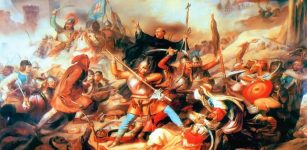 On This Day In History: Siege Of Belgrade – Hungarian Battle Victory – On July 4,1456
News | Jul 4, 2016
On This Day In History: Siege Of Belgrade – Hungarian Battle Victory – On July 4,1456
News | Jul 4, 2016 -
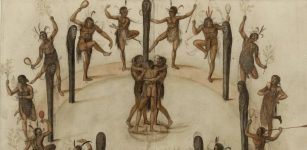 Archaeologists Have A Lot Of Dates Wrong For North American Indigenous History
Archaeology | May 4, 2020
Archaeologists Have A Lot Of Dates Wrong For North American Indigenous History
Archaeology | May 4, 2020 -
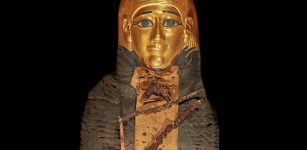 Egyptian ‘Golden Boy’ Mummy Was Protected By 49 Precious Amulets On His Journey To The Afterlife – CT Scans Reveal
Archaeology | Jan 24, 2023
Egyptian ‘Golden Boy’ Mummy Was Protected By 49 Precious Amulets On His Journey To The Afterlife – CT Scans Reveal
Archaeology | Jan 24, 2023 -
 Kalaripayattu – 3,000-Year-Old Indian Martial Art From Which Kung Fu And Karate Emerged
Ancient History Facts | Sep 6, 2020
Kalaripayattu – 3,000-Year-Old Indian Martial Art From Which Kung Fu And Karate Emerged
Ancient History Facts | Sep 6, 2020

